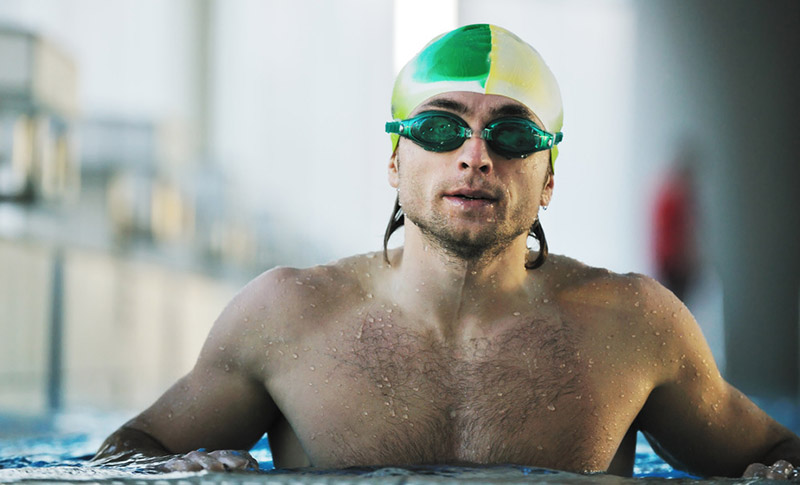How can you shoulder your burdens properly if you are suffering from shoulder impingement syndrome?!
All kidding aside, if your shoulder hurts when you try to reach behind your back or retrieve an object from a high shelf, you should see your physician. Since the shoulder comprises a number of bones, muscles and tendons that allow for a range of motion in your arm, it is vulnerable to a variety of complaints.
Shoulder impingement syndrome, also known colloquially as swimmer’s syndrome or thrower’s syndrome, is the irritation of the tendons in your shoulder caused by rubbing against bone. To understand how it happens, let’s first discuss how the shoulder operates.

A Bit of Anatomy and Physiology
Three major bones comprise your shoulder: your upper arm bone (the humerus), the collarbone (the clavicle) and the shoulder blade, or scapula. The latter two bones create a socket for the humerus, which is protected at the top by muscles and tendons that hold your arm in place. These are called your rotator cuff.
A lubricating sac, or bursa, forms a protective covering between the rotator cuff and the upper bones of the shoulder. The lubrication allows the rotator cuff tendons to glide freely through the bridge created by these upper bones.
Shoulder impingement syndrome results when bone rubs on the bursa and tendons and irritates them. Eventually, it can lead to inflammation of the rotator cuff tendons (tendinitis) and bursa (bursitis).
Treatment for shoulder impingement syndrome is important; otherwise, the tendons may start to thin out and tear. We’ve all heard stories about professional baseball players needing to rehabilitate a torn rotator cuff.
Impingement Syndrome Shoulder – Who Is Susceptible?
Rotator cuff pain, including impingement syndrome shoulder, is common among both young athletes and middle-aged adults. Athletes who repetitively raise their arms overhead, such as swimmers, tennis players and baseball players are particularly susceptible. Among adults, those who repeatedly lift things overhead, such as construction workers or painters, are also at risk.

Types of Shoulder Impingement
Shoulder impingement is classified as either internal or external.
External impingement refers to a structural abnormality or interference with the proper operation of the rotator cuff. Primary impingement is generally due to the abnormally shaped arch in the shoulder bones or to bone spurs that come with degeneration of the bone. Secondary impingement usually results from poor shoulder blade stabilization that changes the position of the arch and causes rubbing; it can also be a consequence of tendons weakened from overuse.
Internal impingement generally occurs in athletes whose sports focus on throwing, such as javelin or baseball. The underside of the rotator cuff tendons rubs against a different bone (glenoid labrum) to cause pain at both the back and front of the shoulder.
Ouch, It Hurts!
Initially, symptoms from shoulder impingement syndrome can be mild and sufferers may not immediately seek treatment. Athletes may have pain when throwing or serving a tennis ball, while others may experience sudden pain when they reach or lift. Pain may radiate from the front of the shoulder to the side of the arm. There may be minor pain both during activity and while at rest.
As the impingement becomes more severe, there will be pain at night and loss of strength and motion. Activities, such as zipping a zipper, that require an arm to reach behind the back will become difficult. When this happens, it’s definitely time to seek medical attention.

Diagnosis of Shoulder Impingement Syndrome
When your doctor examines you, he or she will test your shoulder for range of motion. You may also be required to undergo an MRI test, since they are useful for soft tissue injuries and may show the inflammation. An X-ray may be taken if bone spurs are the suspected cause of the impingement.
Shoulder Impingement Syndrome Treatment
Shoulder impingement syndrome treatment will generally begin with non-surgical options, including rest from activities that are suspected causes; non-steroidal anti-inflammatory medicine to reduce swelling and pain; and physiotherapy.
Your physiotherapist will work with you towards restoring the normal range of motion. Shoulder impingement syndrome exercises may include stretching exercises to relieve pain and improve motion. Once the pain in your shoulder begins to subside, your physiotherapist can work with you on strengthening your rotator cuff muscles so the shoulder impingement syndrome doesn’t recur.
If this course of shoulder impingement syndrome treatment doesn’t alleviate your pain, you make receive a shot of the steroid cortisone, since it is a powerful anti-inflammatory.
When all else fails, surgery may be necessary to create more space in your body for the rotator cuff. Generally, the surgeon will remove the inflamed portion of your bursa and may also remove a piece of the arch bone that rubs against the rotator cuff.
If surgery is required, you will probably need to wear a sling for a period of time to support the shoulder as it heals. Physiotherapy will then assist you in regaining motion and strength.
Remember, don’t ignore pain in your shoulder, because your body is signalling that something is wrong.
